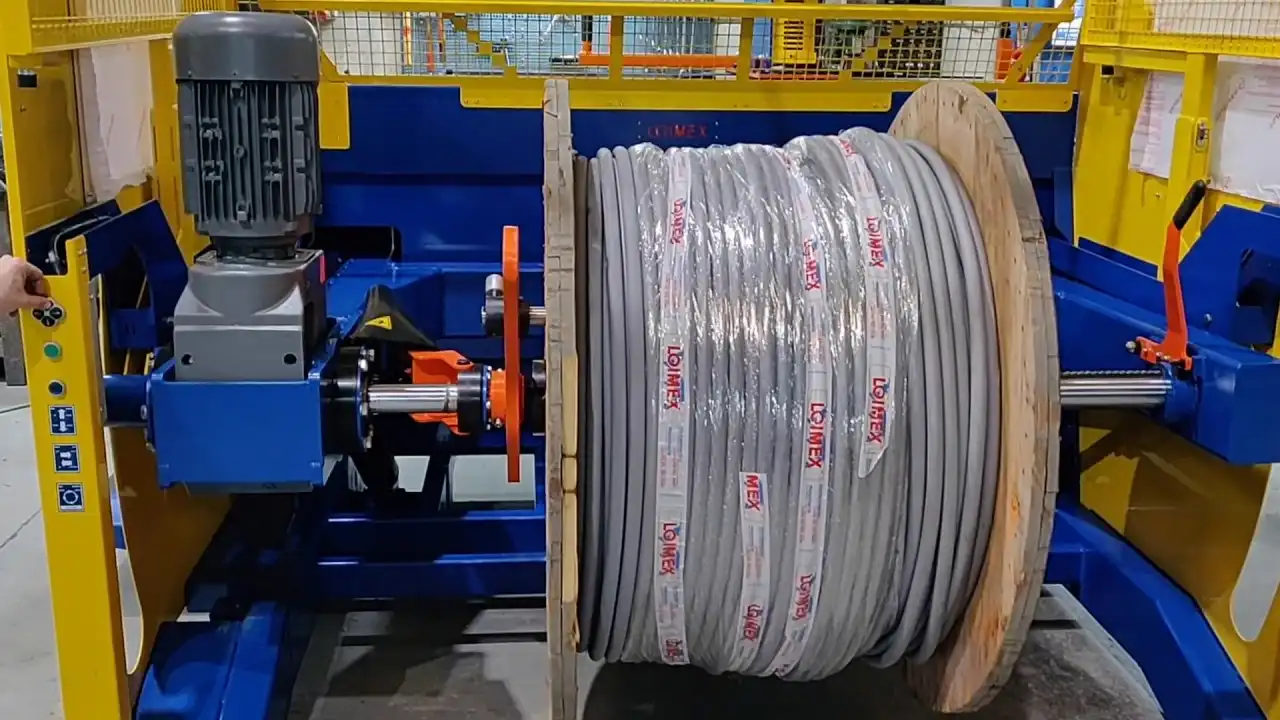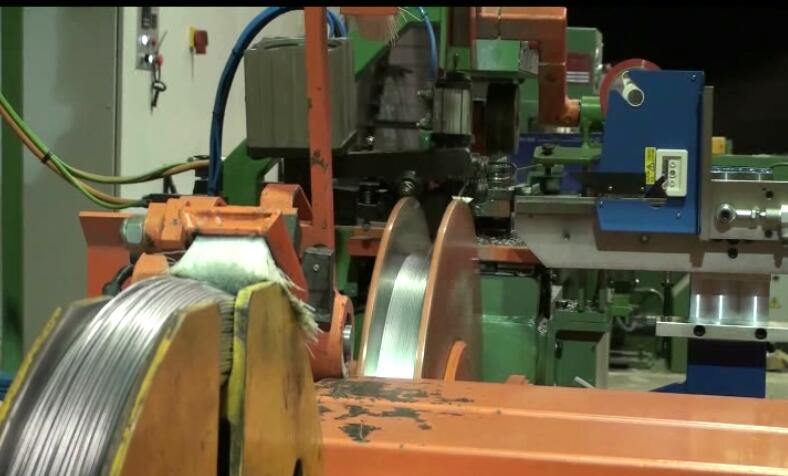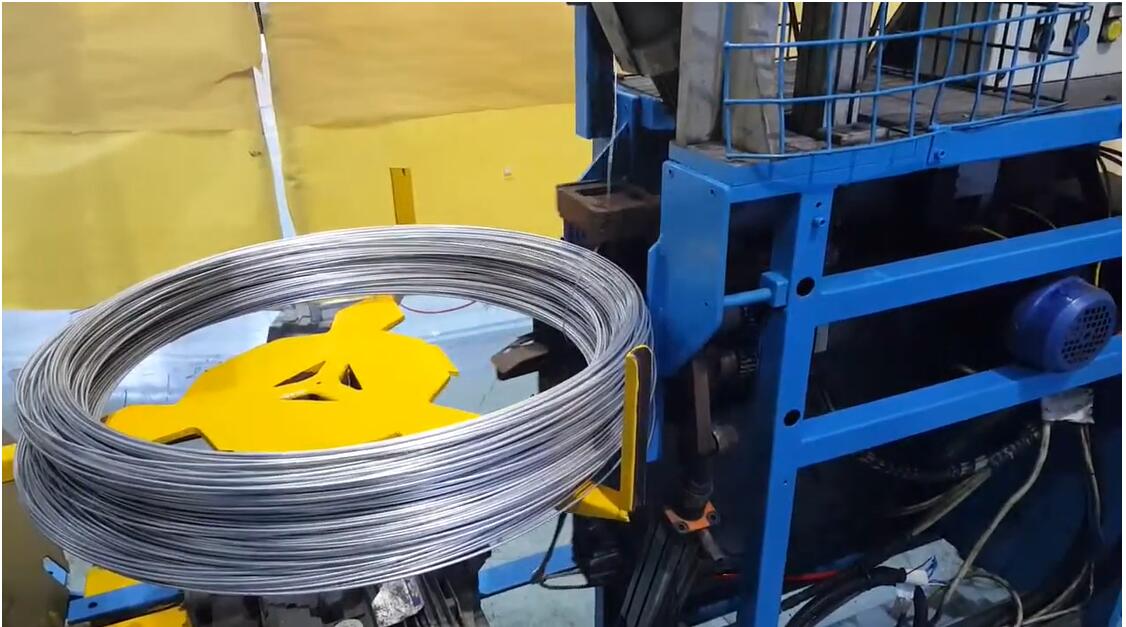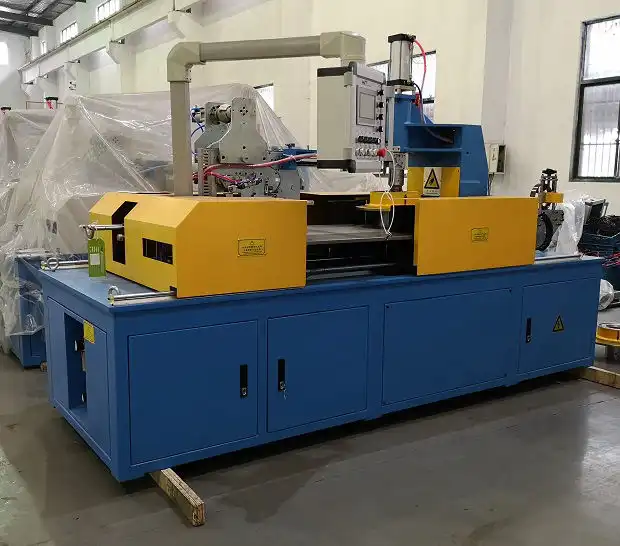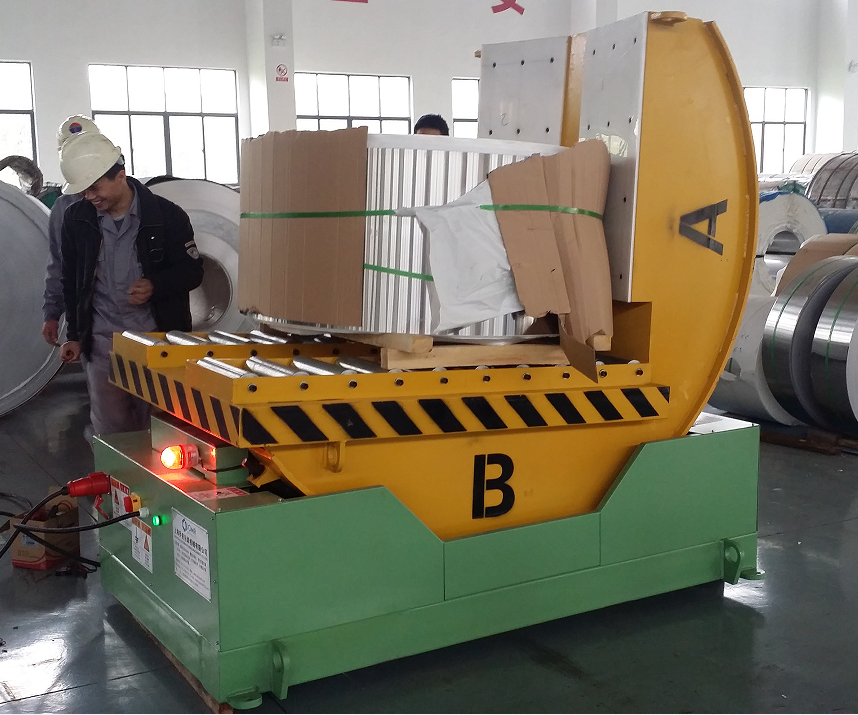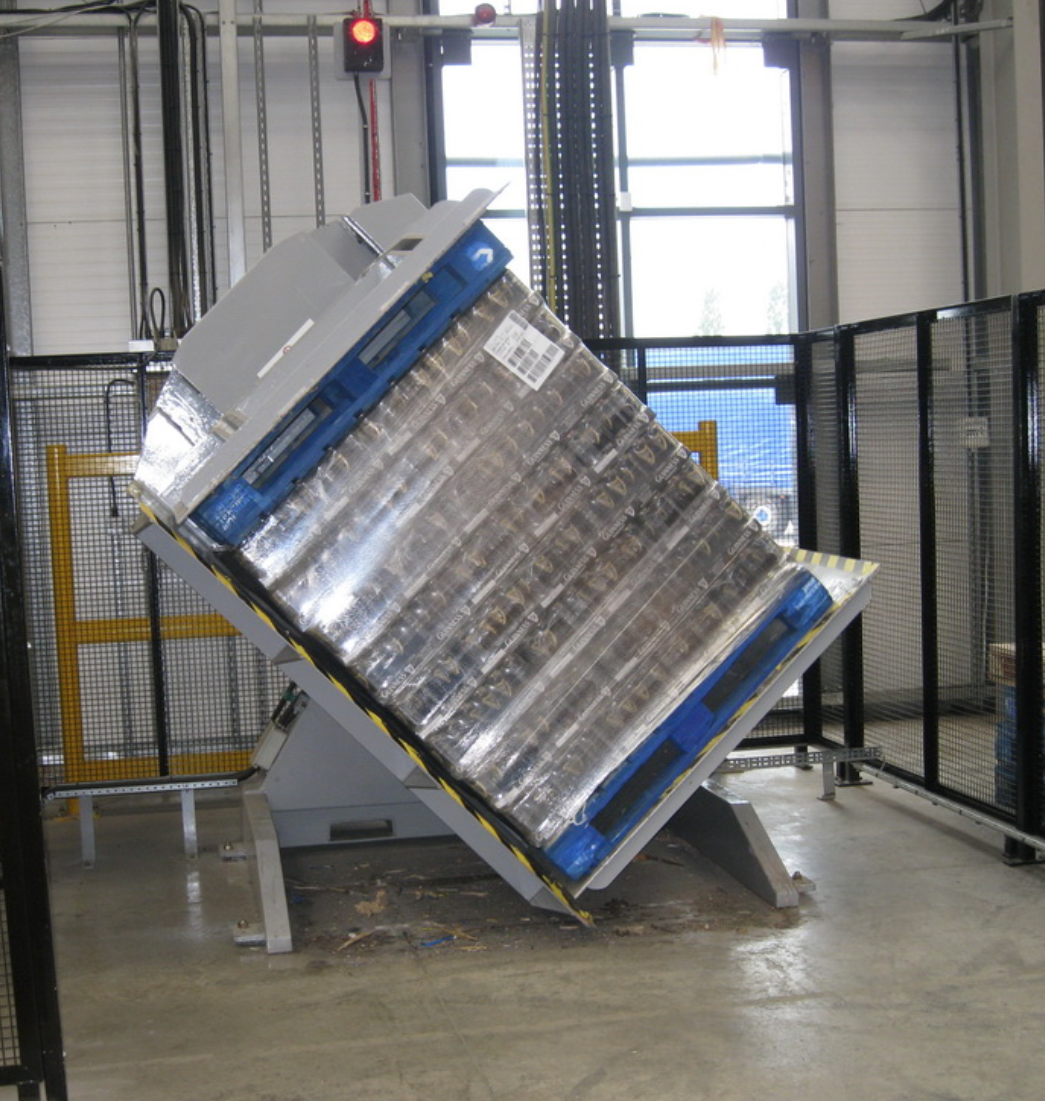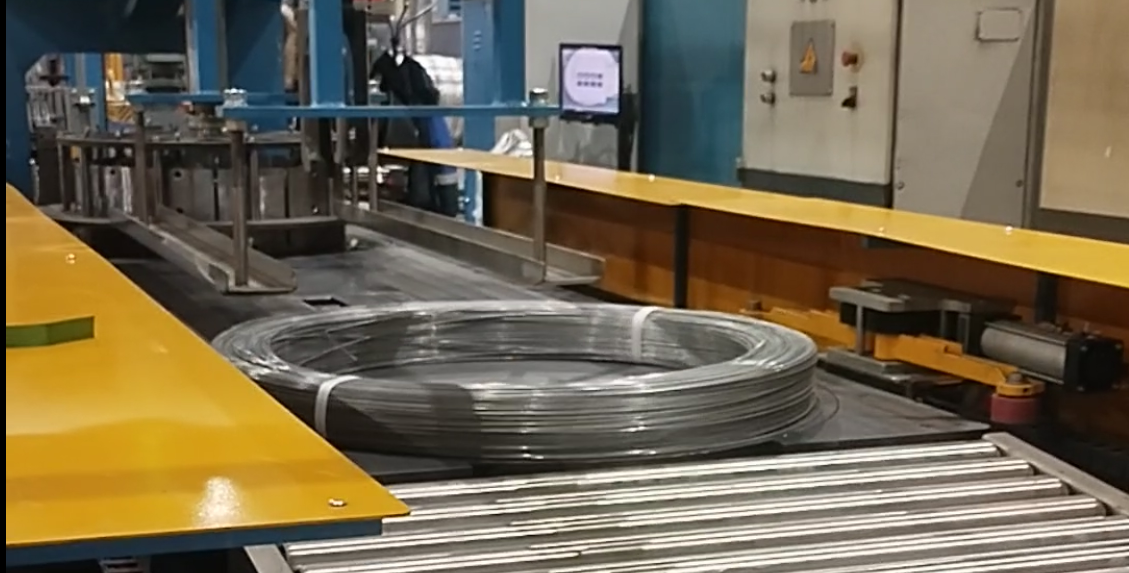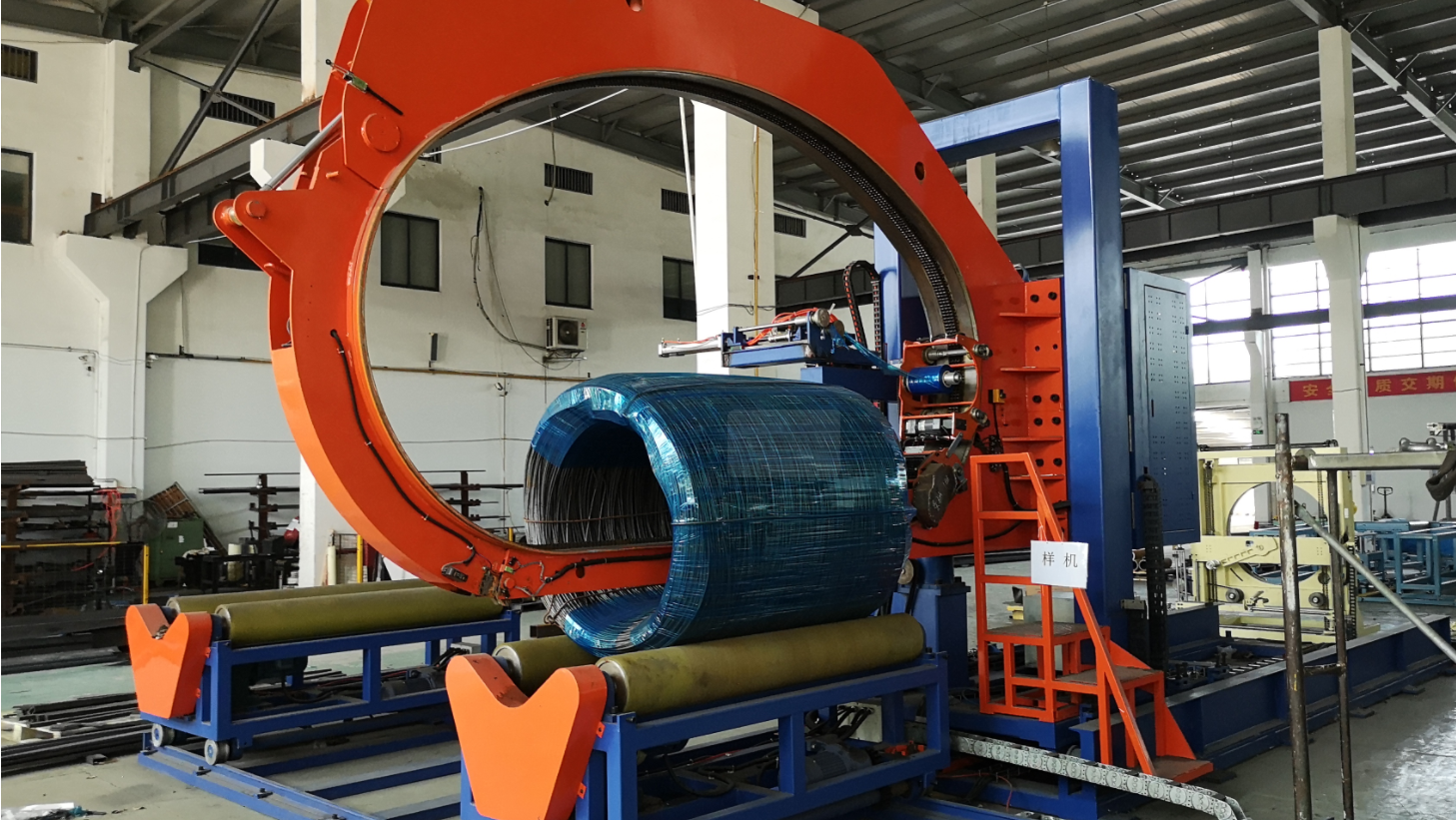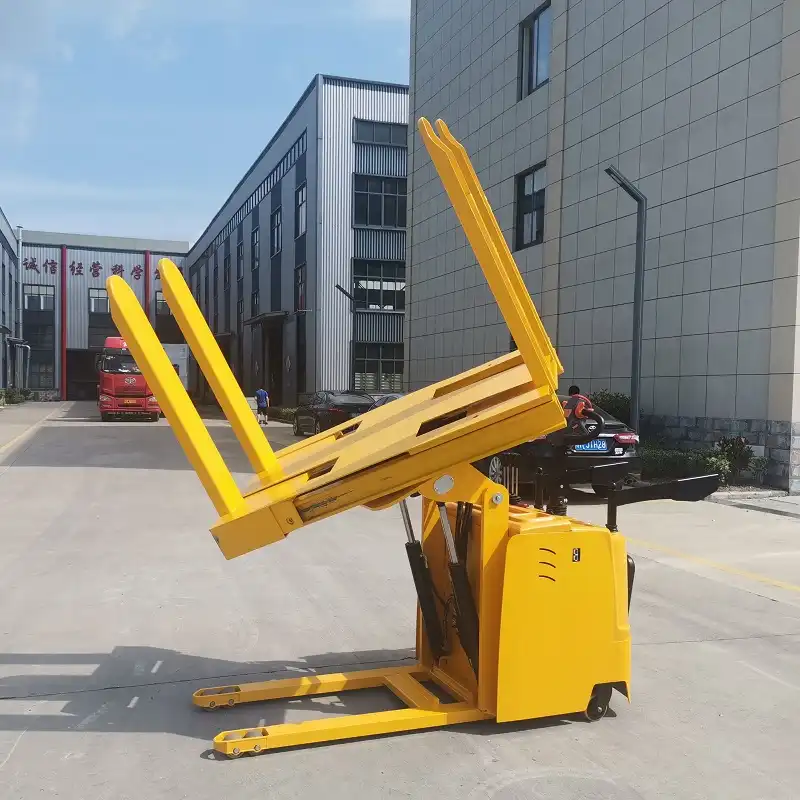How to Ensure Compliance with Safety Regulations for Pipe Bundling Machines?
Pipe bundling machines enhance efficiency, but ensuring safety is paramount. Compliance with safety regulations protects operators and prevents accidents. By understanding these regulations and implementing proactive safety measures, businesses can create a safer working environment.
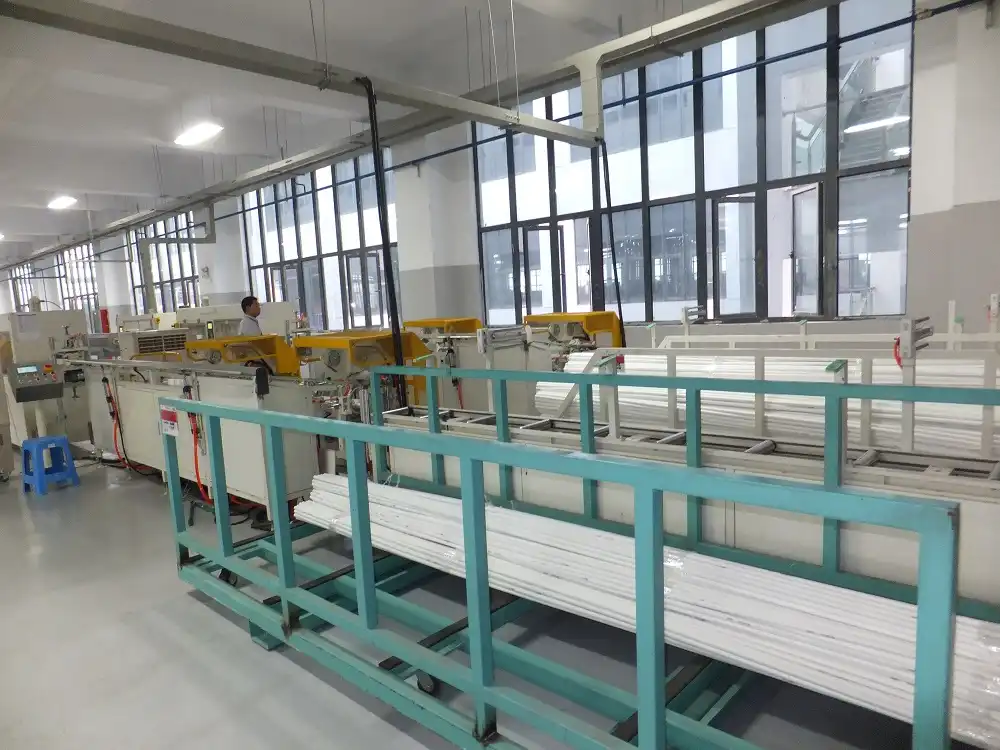
To ensure compliance with safety regulations for pipe bundling machines, operators must implement comprehensive safety training, conduct regular risk assessments, maintain equipment meticulously, and adhere to industry standards and legal requirements. This proactive approach will minimize risks and ensure a safe working environment.
Maintaining a safe operational environment for pipe bundling machines is crucial for protecting workers and ensuring regulatory compliance. This article explores the essential steps to comply with safety regulations, providing insights into risk assessment, safety measures, and ongoing maintenance.
1. Understanding Key Safety Regulations for Pipe Bundling Machines
Navigating the landscape of safety regulations is the first step toward ensuring compliance. These regulations are designed to minimize risks and promote a safe working environment for all personnel involved.
Key safety regulations for pipe bundling machines include OSHA standards, ANSI standards, and local jurisdictional requirements. These regulations cover machine guarding, emergency stop mechanisms, lockout/tagout procedures, and comprehensive safety training to prevent accidents and ensure worker safety.
Several standards and guidelines govern the safe operation of pipe bundling machines. Here’s a breakdown of key regulations:
OSHA Standards
The Occupational Safety and Health Administration (OSHA) sets and enforces standards to ensure safe and healthful working conditions. These standards are crucial for protecting employees from hazards associated with machinery like pipe bundling machines.
OSHA regulations cover various aspects of machine safety, including:
- Machine Guarding (29 CFR 1910.212): Requires that all moving parts of machinery are adequately guarded to prevent employee contact and injury.
- Control of Hazardous Energy (Lockout/Tagout) (29 CFR 1910.147): Mandates procedures for safely shutting down equipment and preventing the unexpected release of hazardous energy during maintenance and servicing.
- Hazard Communication (29 CFR 1910.1200): Ensures that employees are informed about the chemical hazards present in the workplace through training and readily available safety data sheets (SDS).
- Personal Protective Equipment (PPE) (29 CFR 1910 Subpart I): Specifies the requirements for PPE, including eye protection, gloves, and safety footwear, to protect employees from potential injuries.
ANSI Standards
The American National Standards Institute (ANSI) develops voluntary consensus standards for a wide range of industries, including machinery safety. While compliance with ANSI standards is not legally mandated, they often represent best practices and can be incorporated into legal requirements.
Relevant ANSI standards for pipe bundling machines include:
- ANSI B11 series: A comprehensive set of standards that cover the design, construction, and operation of various types of machinery. These standards provide detailed guidelines on risk assessment, machine guarding, and safety control systems.
- ANSI Z244.1: Standard for Lockout/Tagout, providing detailed procedures for controlling hazardous energy during servicing and maintenance.
Local Jurisdictional Requirements
In addition to federal standards, local jurisdictions may have their own safety regulations that apply to pipe bundling machines. These regulations can vary depending on the location and industry. It’s essential to research and comply with all applicable local requirements to ensure comprehensive safety.
Understanding the Importance of Compliance
Compliance with safety regulations is not merely a legal obligation but a fundamental aspect of responsible business practice. By adhering to these regulations, employers can:
- Prevent Accidents and Injuries: Proper machine guarding, lockout/tagout procedures, and PPE can significantly reduce the risk of accidents and injuries, protecting employees from harm.
- Maintain a Safe Working Environment: A culture of safety promotes employee morale and productivity, as workers feel valued and protected.
- Avoid Legal Penalties: Non-compliance with safety regulations can result in hefty fines, legal action, and damage to the company’s reputation.
- Improve Operational Efficiency: A well-maintained and safely operated machine is more efficient and reliable, leading to increased productivity and reduced downtime.
To illustrate the benefits of adherence to regulation, consider the following data (fictional data):
| Factor | Non-Compliant Facility | Compliant Facility |
|---|---|---|
| Accident Rate (per year) | 5 | 1 |
| Downtime (hours per year) | 40 | 10 |
| Morale (Employee survey) | 6/10 | 9/10 |
Subtitle: Proactive Steps for Assessing and Reducing Hazards
To avoid fines and ensure employee safety, it’s best practice to identify specific hazards and mitigate or eliminate their potential danger:
- Regular Audits: Audit your workplace and processes regularly for any potential hazards. Check whether machine guarding is adequate, whether the operators are properly trained, and confirm the use of PPE.
- Update Knowledge Base: Maintain current knowledge of regulation updates and adapt your processes as necessary.
- Control Access: Unauthorized personnel must not be able to access machinery in operation.
By focusing on safety and regulation implementation, owners and employees can reduce the chance of potentially catastrophic accidents.
2. Implementing Comprehensive Safety Measures for Pipe Packaging Machines
Implementing practical safety measures is critical for preventing accidents and ensuring the well-being of employees. These measures encompass machine guarding, emergency stop mechanisms, lockout/tagout procedures, and comprehensive safety training.
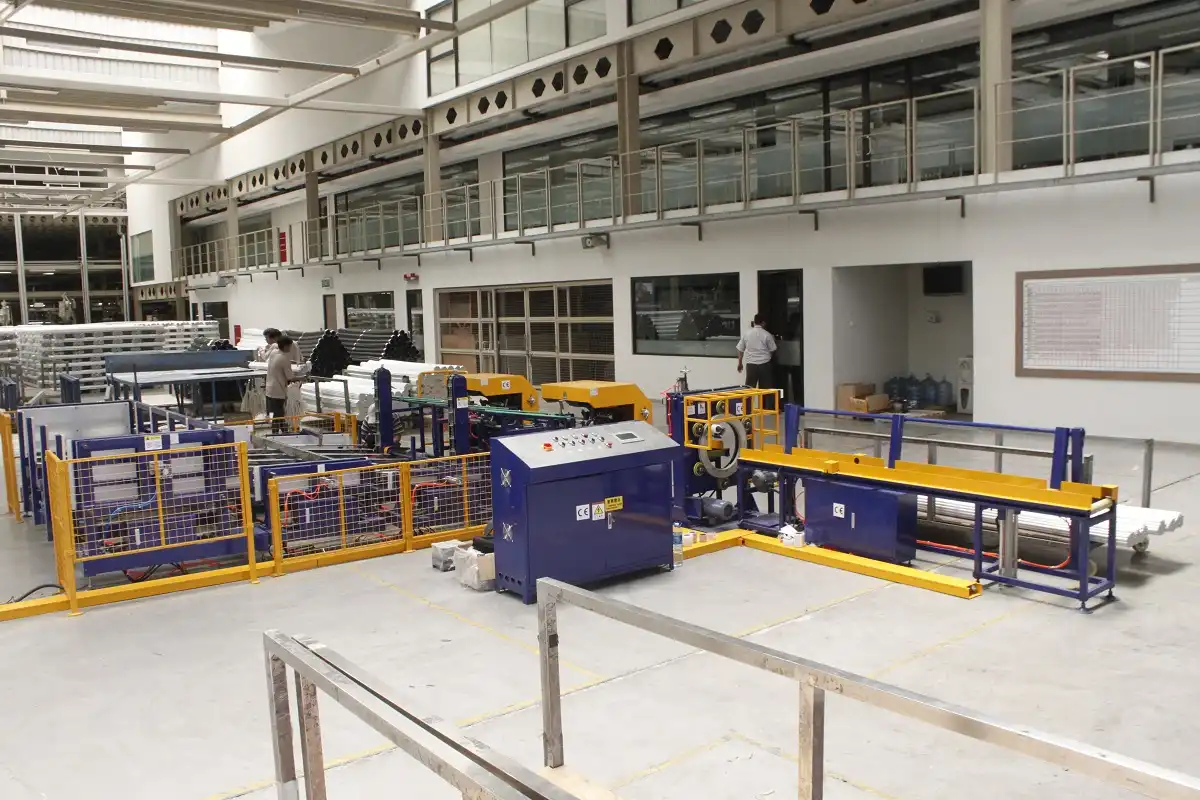
To implement comprehensive safety measures, focus on machine guarding, emergency stops, lockout/tagout, and rigorous training. These measures prevent accidents, protect operators, and ensure compliance. Regular audits and adherence to guidelines create a safer operational environment.
Beyond understanding the regulations, the practical implementation of safety measures is equally vital. This involves setting up robust mechanisms that safeguard operators and mitigate potential risks associated with pipe packaging machines.
Machine Guarding
Machine guarding is the cornerstone of any safety program. Guards must be installed to protect operators from moving parts, pinch points, and other potential hazards.
Key considerations for machine guarding include:
- Physical Barriers: Use fixed guards or interlocked barriers to prevent access to hazardous areas.
- Adjustable Guards: Install adjustable guards that can be easily adjusted to accommodate different pipe sizes and configurations.
- Light Curtains and Safety Sensors: Utilize light curtains and safety sensors to automatically shut down the machine if an operator enters a hazardous area.
- Regular Inspections: Conduct regular inspections of all guards to ensure they are in good condition and functioning properly.
To fully understand the benefits of an investment in machine guarding, consider this chart:
| Guarding Level | Accident Rate | Description |
|---|---|---|
| None | 10% | No physical safeguards are present. |
| Basic | 5% | Basic caging or physical protection. |
| Advanced | 1% | Automatic shutoff present in the event of a person getting too close, as well as physical barriers. |
This simple metric illustrates the necessity of physical safeguards for employees.
Emergency Stop Mechanisms
Emergency stop mechanisms provide a quick and reliable means for operators to shut down the machine in case of an emergency. These mechanisms should be readily accessible and clearly marked.
Key considerations for emergency stop mechanisms include:
- Location: Place emergency stop buttons within easy reach of all operators.
- Visibility: Ensure that emergency stop buttons are highly visible and clearly labeled.
- Functionality: Regularly test emergency stop buttons to verify that they function correctly.
- Training: Train all operators on the location and proper use of emergency stop buttons.
Lockout/Tagout Procedures
Lockout/tagout procedures are essential for safely shutting down equipment and preventing the unexpected release of hazardous energy during maintenance and servicing.
Key steps in a lockout/tagout procedure include:
- Identify Hazardous Energy Sources: Identify all sources of hazardous energy, such as electricity, compressed air, and hydraulic fluid.
- Shut Down and Isolate Equipment: Shut down the equipment and isolate all energy sources by disconnecting power, closing valves, and blocking moving parts.
- Apply Locks and Tags: Attach locks and tags to all energy-isolating devices to prevent unauthorized operation of the equipment.
- Verify Isolation: Verify that all energy sources have been effectively isolated before beginning maintenance or servicing.
- Training: All employees must be trained on the specifics of the lockout/tagout system, and why it exists.
- Regular Evaluation: Periodically evaluate the effectiveness of your LOTO program, making changes and reinforcing the reasons for the program as necessary.
Comprehensive Safety Training
Comprehensive safety training is crucial for ensuring that operators understand the hazards associated with pipe bundling machines and how to operate them safely.
Effective training programs should cover:
- Machine Operation: Provide detailed instructions on the proper operation of the machine, including startup, shutdown, and emergency procedures.
- Hazard Identification: Train operators on how to identify potential hazards and take appropriate precautions.
- Machine Guarding: Explain the purpose and function of all machine guards and emphasize the importance of keeping them in place.
- Lockout/Tagout Procedures: Provide detailed training on lockout/tagout procedures, including the proper use of locks and tags.
- Personal Protective Equipment: Instruct operators on the proper use and maintenance of PPE.
To that end, there are third-party vendors, industry associations, and even equipment manufacturers, who will help train your staff. Always choose reputable training programs to ensure employee safety.
3. Ensuring Ongoing Maintenance and Regular Inspections of Pipe Packaging Machines
Maintaining the integrity of your machinery is essential for its smooth and safe operation. Proper maintenance and inspections go a long way in minimizing hazards.
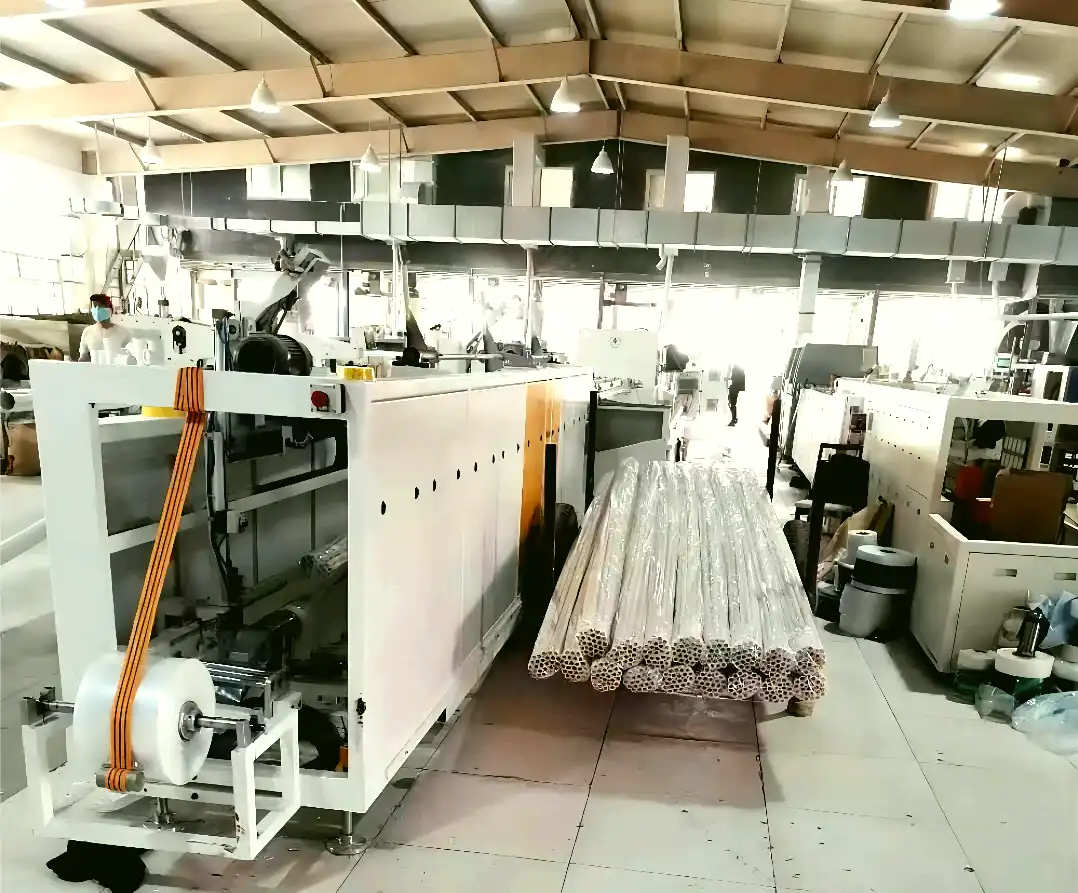
Ongoing maintenance and regular inspections are crucial for the longevity and safety of pipe bundling machines. Routine checks, lubrication, part replacements, and scheduled inspections ensure compliance with safety standards and prevent breakdowns, maintaining efficiency and operator safety.
After implementing safety measures, maintaining and inspecting pipe packaging machines is essential. Preventative maintenance minimizes unexpected downtime and keeps your employees working safe.
Subtitle: The Keys to Maintenance and Inspection for Ongoing Safety
Many companies fail at the basic steps of keeping up with proper maintenance of their machinery. Here are a few procedures to follow to ensure a safe working environment:
- Routine Checks: Perform routine checks on all components of the machine, including motors, belts, pulleys, and hydraulic systems, to identify signs of wear or damage.
- Lubrication: Lubricate moving parts regularly to reduce friction and prevent overheating. Lubricate the parts that require it as well as inspect and confirm that automatic lubrication systems are working.
- Part Replacement: Replace worn or damaged parts promptly to prevent machine malfunctions and accidents.
- Scheduled Inspections: Conduct scheduled inspections by qualified personnel to identify potential safety hazards and ensure compliance with regulations. The intervals of inspections, surveys, and tests shall be established to determine what work practices are necessary for the inspection/test frequencies and must be in writing.
Specific maintenance and inspection procedures for each component should include items such as:
| Component | Inspection Item | Maintenance Item | Frequency |
|---|---|---|---|
| Belts & Pulleys | Wear, cracks, alignment | Replacement, adjustment | Monthly |
| Hydraulic System | Leaks, hose condition | Tighten connections, replace hoses and seals | Quarterly |
| Motors | Overheating, unusual noises | Lubrication, cleaning | Semi-Annually |
| Emergency Stop Buttons | Functionality, visibility | Testing, cleaning | Monthly |
| Safety Sensors | Alignment, response time | Calibration, cleaning | Quarterly |
| Machine Guarding | Damage, integrity,missing fasteners | Repairs or replacement | Monthly |
Document Everything
Records must verify that inspections, services, tests, and audits are followed. The
information should include but not be limited to dates and times of services, tests, and
audits. To control the corrective action process, consider the use of a tracking system. This
tracking system might include periodic status reports shared with affected levels of
management, specific reports such as completion of an engineering study, and a final
implementation report to provide closure for deficiencies. Share this information with
affected employees and management, and implement recommendations. This type of
tracking system provides the employer with the status of the corrective action. It also
provides the documentation required to verify that appropriate corrective actions were
taken on deficiencies identified during previous audits or inspections.
4. The Role of Risk Assessment in Ensuring Safety
Risk assessment is a proactive process that involves identifying and evaluating potential hazards associated with pipe bundling machines. By conducting regular risk assessments, employers can develop effective strategies for mitigating risks and ensuring a safe working environment.

Risk assessment involves identification, evaluation, and mitigation. Regular assessments help pinpoint hazards and implement controls to ensure a safer workplace. A safe environment enhances productivity and reduces the likelihood of costly incidents, benefiting both employees and the organization.
Conducting a thorough risk assessment:
- Hazard Identification: Begin by systematically identifying all potential hazards associated with the machine. Consider factors such as moving parts, electrical components, ergonomic stressors, and environmental conditions.
- Risk Evaluation: Evaluate the likelihood and severity of each identified hazard. Use a risk matrix to prioritize hazards based on their potential impact.
- Control Measures: Develop and implement control measures to eliminate or minimize each identified risk. These measures may include engineering controls, administrative controls, and personal protective equipment.
- Documentation: Document the entire risk assessment process, including the identified hazards, risk evaluations, and control measures. This documentation serves as a valuable reference for future safety efforts.
- Regular Reviews: Conduct regular reviews of the risk assessment to ensure that it remains relevant and effective. Update the assessment as needed to reflect changes in equipment, procedures, or the work environment.
Why Risk Assessment Matters
A proactive risk assessment program is not merely a safety measure, but a strategic advantage that benefits the entire organization.
A risk matrix would look something like this:
| Hazard | Likelihood | Severity | Risk Level | Control Measures |
|---|---|---|---|---|
| Entanglement | Moderate | High | High | Install machine guards, provide safety training, implement lockout/tagout procedures |
| Electrical Shock | Low | High | Medium | Inspect electrical components, ensure proper grounding, provide insulated tools |
| Ergonomic Stressors | High | Moderate | Medium | Adjust workstation height, provide ergonomic training, encourage regular breaks |
| Slips and Falls | Moderate | Low | Low | Maintain clean and dry floors, provide non-slip footwear, implement housekeeping procedures |
By following the risk matrix and implementing controls, operators can minimize risks and create a safer environment for everyone.
5. Conclusion
Ensuring compliance with safety regulations for pipe bundling machines is not merely a matter of following rules; it is about creating a culture of safety that protects workers, promotes operational efficiency, and safeguards the company’s reputation. By understanding the key safety regulations, implementing comprehensive safety measures, and conducting regular risk assessments, employers can create a safer and more productive working environment.
A comprehensive strategy, encompassing regular risk assessments, stringent machine maintenance, and detailed record-keeping, is crucial. Investing in safety leads to increased productivity, reduced downtime, and enhanced employee morale, demonstrating that a safe workplace is a successful workplace.


